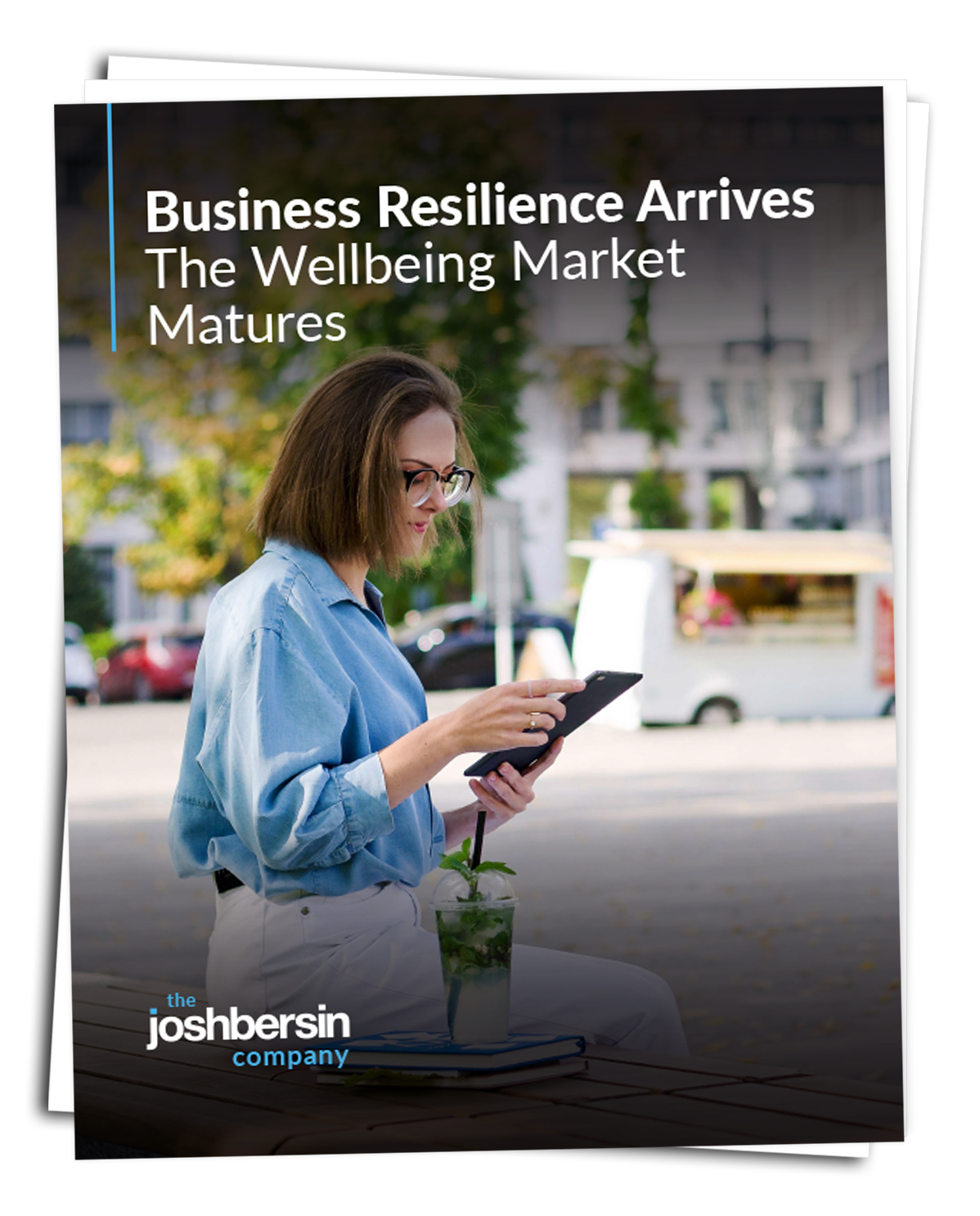Are we turning a corner? Employee well-being and employer support showing signs of improvement.
After two years of dismal news about employee well-being, could we be turning a corner? Here at meQuilibrium, we have been tracking changes in well-being on a bi-annual basis since COVID-19 upended our work lives almost two years ago. Trends have been generally dismal: every six months we’ve seen declines in positivity, motivation and increases in burnout and job stress. There have been few bright spots.
But wait. For the first time since our semi-annual well-being self checks began in July 2020, our December 2021 self-check data from 6,369 meQuilibrium members provides some reason for hope. The data show what might be the beginning of a reversal in what has been a distressing trend in employee well-being.
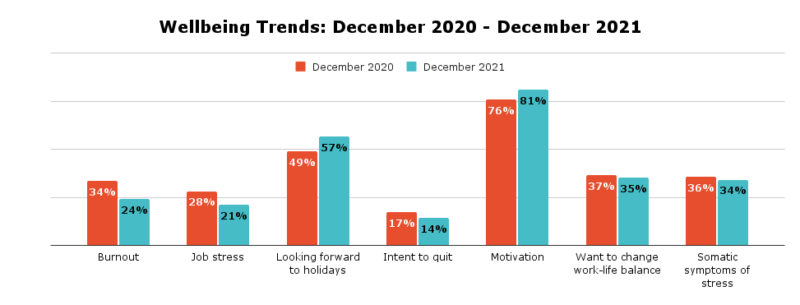
Compared to December 2020, burnout dropped 10 percentage points, job stress was down seven points, motivation ticked up a bit and intent to quit was down modestly. While a victory lap might not yet be in order—one in four employees still shows signs of extreme burnout—it’s hard to not breathe a small sigh of relief for what looks like the beginning of a turnaround.
Employer support remains powerful
We’ve regularly checked in on how well our members feel supported by their employers. Data from the December 2021 self check continue to confirm the value of strong employer support for employee well-being. Across six key indicators of well-being, employees who feel strongly supported by their employer have broadly better well-being outcomes than those who do not feel strongly supported. Compared to those who do not feel supported, well-supported employees are:
- more positive
- in better work-life balance
- less burned-out
- less likely to suffer from job stress
- more motivated, and
- half as likely to turn over
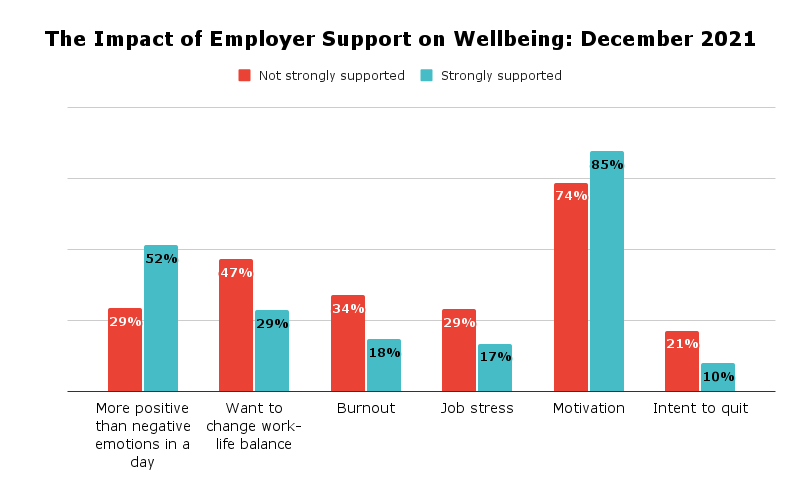
However, perceived employer support continues to trend downward.
The generally positive overall trends we see in well-being indicators are particularly notable given that they are accompanied by a second downturn in employees’ perceptions of employer support.
Compared to a year ago, employees are significantly less likely to feel strongly supported by their employer. Continuing a downward trend first noted in July 2021, the rate of employees who report feeling strongly supported by their employer is down a total of 15 percentage points year over year.
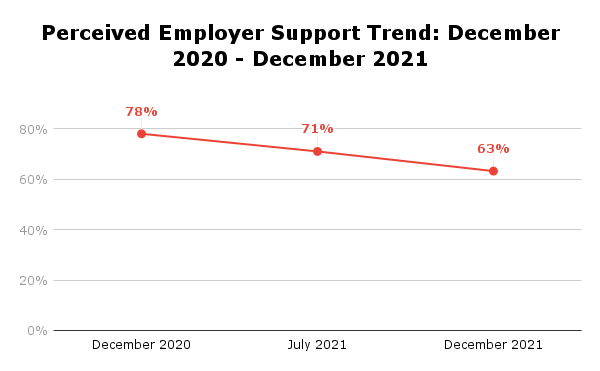
Wait, what? Support is dropping and well-being is up?
Taken together with the downward trend in employer support, the finding that well-being trends have shown improvements for the first time in two years presents a paradox. If employer support is so valuable, and employees report feeling less well-supported, how is well-being on the upswing?
Organizations that had solutions in place before the pandemic had the tools to reinforce employee well-being. After supporting employees strongly during the earliest months of the pandemic, perceived support is likely ebbing because leaders are turning to face the daunting task of re-tooling their organizations in order to remain competitive in a post-COVID landscape. Perceived employer support may also be dropping due to changing employee needs. After navigating the primary and several secondary variant waves of the pandemic, and getting adjusted to new, more flexible ways of working, employees may be feeling better on average while also feeling less in need of employer support. The most important thing leaders can do is keep an eye on trends and adjust accordingly before they become a bigger problem within the organization.
What are the MVPs of Employer Support?
We’ve traced perceived support for going on two years now. In our most recent self-check, we did a deep dive to ask employees exactly what their employers are doing or offering that they find helpful. We offered a long list of potential employer policies and actions that have been deployed by employers over the course of the pandemic and asked our members to rank which had been most helpful to them. Four things topped the list of MVPs—most valued policies—in the December 2021 self check. Two were concrete and practical—allowing for flexibility in work location (52% of members named this in the top 3) and schedule (45% named this in their top 3). Rounding out the top four were two examples that tend more toward emotional support: having a manager that reached out and showed concern for their well-being (45% of members named this in their top 3) and clear communication from management about the pandemic.
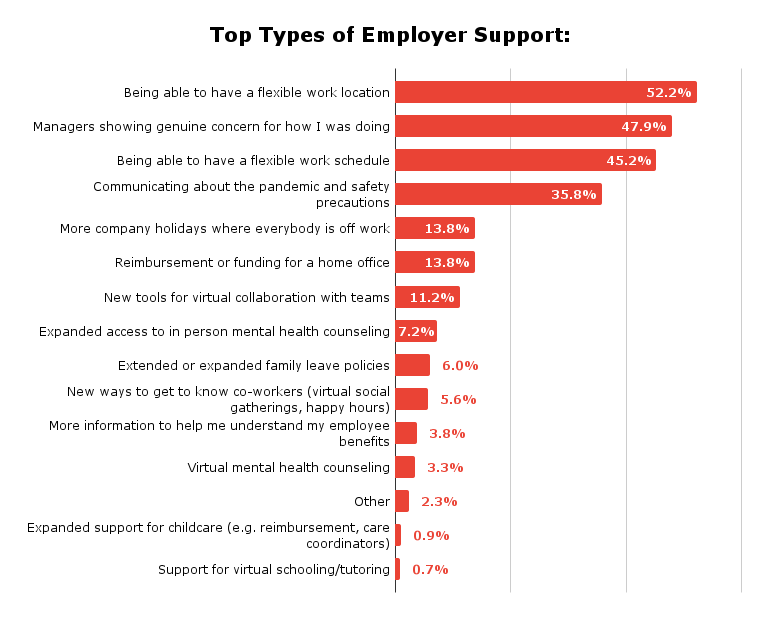
Who gets it right?
Turning a corner may look different to each organization depending on the system they use to understand what is changing. Here’s what we know works: if you can identify areas to enhance employee well-being and take action to support your people, you can measure the results. With results from meQuilibrium, it’s possible to build on strengths. That’s when a corner turns to a company milestone.
Get more insights from our December self-check data. Contact a meQuilibrium resilience specialist to learn more about business resilience.





